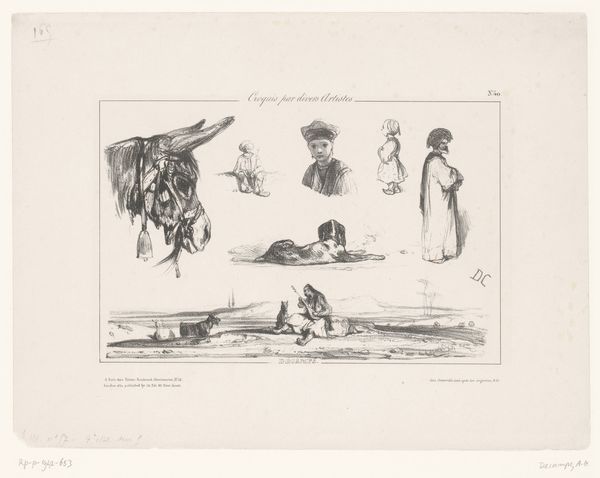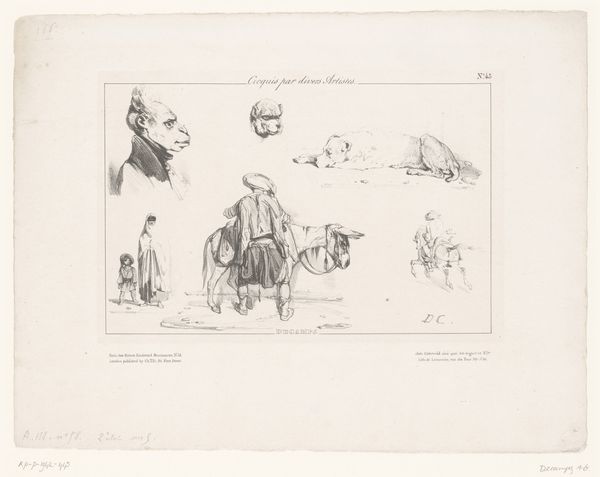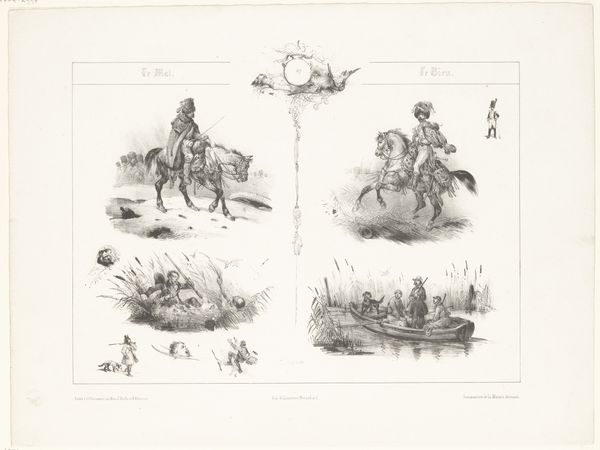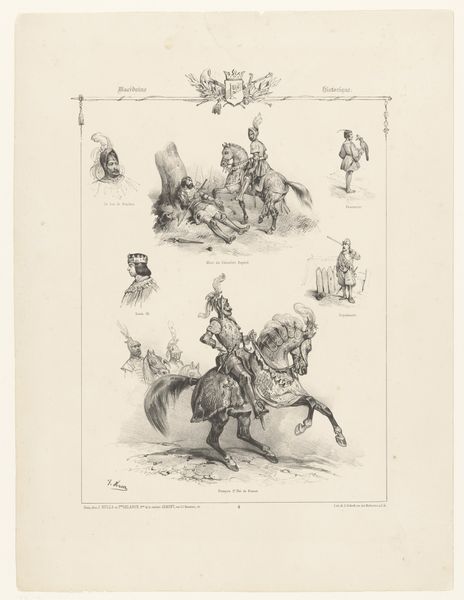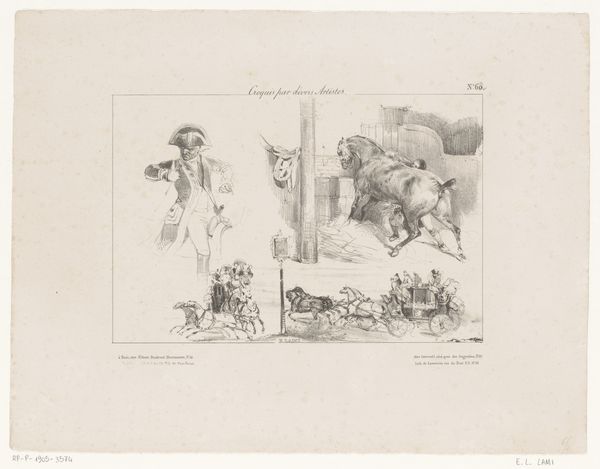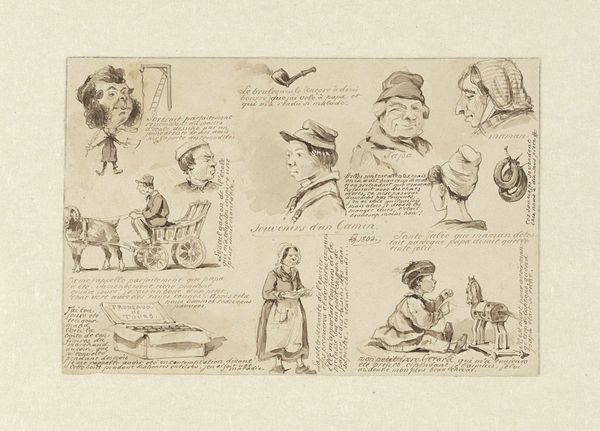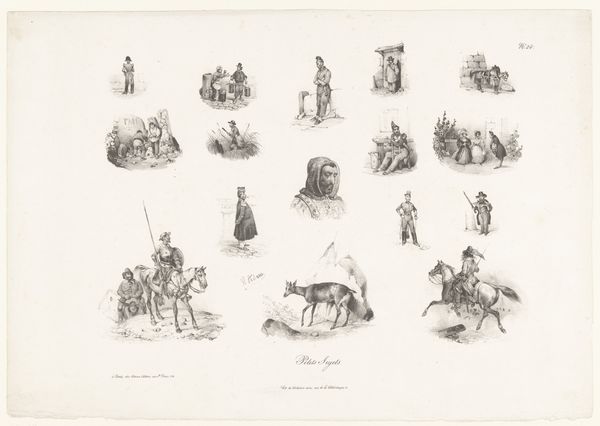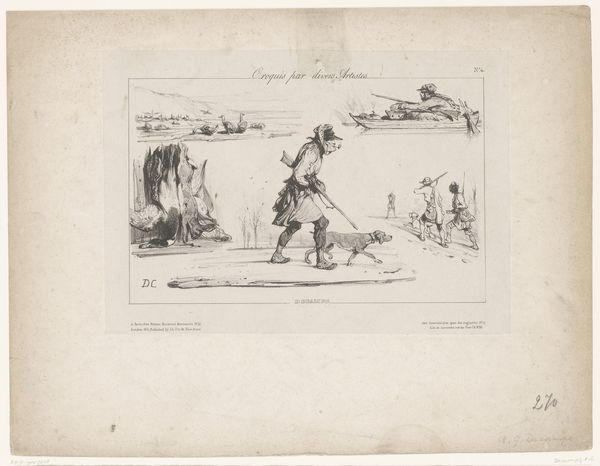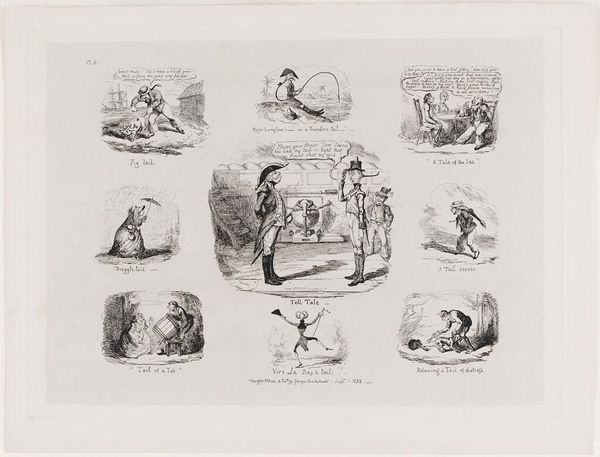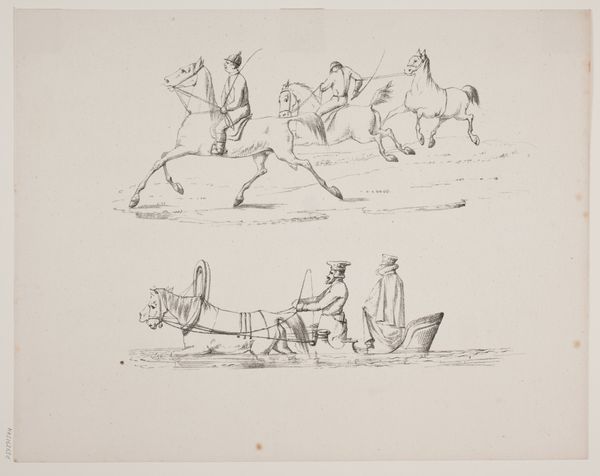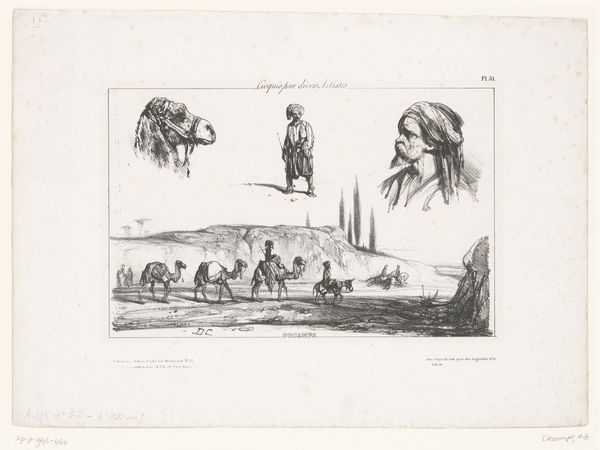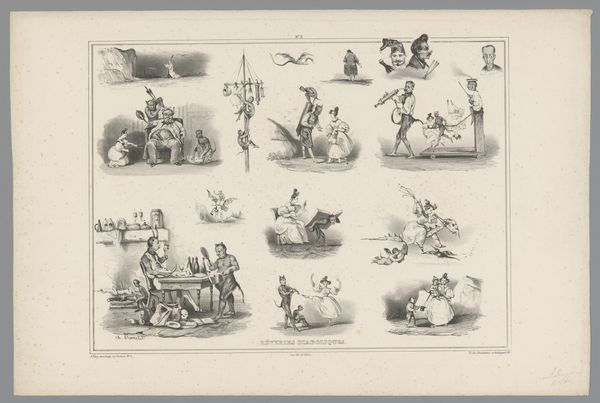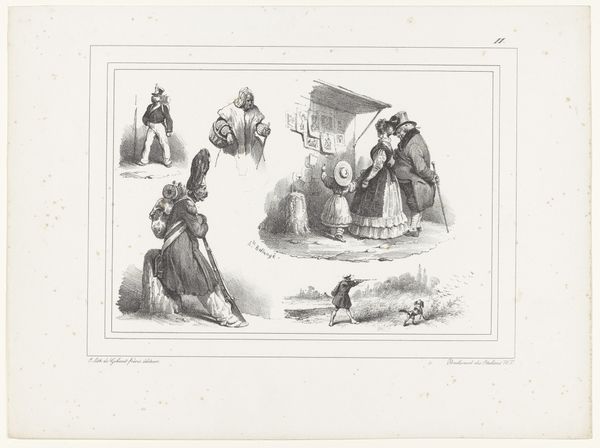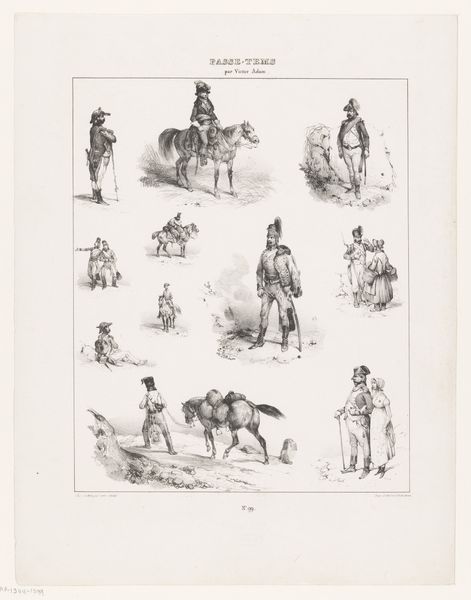
Zes voorstellingen van verschillende figuren en dieren 1830 - 1831
0:00
0:00
drawing, pen
#
portrait
#
drawing
#
comic strip sketch
#
light pencil work
#
quirky sketch
#
caricature
#
figuration
#
personal sketchbook
#
idea generation sketch
#
sketchwork
#
ink drawing experimentation
#
romanticism
#
sketchbook drawing
#
pen
#
genre-painting
#
storyboard and sketchbook work
#
sketchbook art
Dimensions: height 210 mm, width 286 mm
Copyright: Rijks Museum: Open Domain
Curator: This is Alexandre-Gabriel Decamps’ “Six Representations of Various Figures and Animals,” made around 1830-1831. The piece consists of several sketches rendered in pen, residing in the Rijksmuseum’s collection. Editor: My first impression is of an artist’s casual visual playground—a space for spontaneous ideas to breathe. I see lines that convey weight, and wonder how Decamps manipulated the pen and paper to make these. Curator: Yes, it feels like peering into a 19th-century sketchbook. What draws me are the recurring motifs. The faces, particularly the prominent man on the top left, hint at societal types that Decamps seems keen on dissecting. His presence resonates with power—but power rendered somewhat comically. Editor: True, but it's the execution that fascinates. The starkness of pen on paper… you can almost feel Decamps pressing down, varying his strokes to imply light and shadow, especially in rendering the textiles. What was the accessibility of these materials? The paper quality? It tells us something about Decamps's position. Curator: I agree that material context is key, but also note the donkey rider's garb versus the dress of the woman in the bottom right—symbols of societal layers, presented together, contrasting cultures and their expectations within shared social spaces. It is fascinating that they remain recognizable today. Editor: Speaking of layers, the arrangement itself suggests a method of cataloging ideas, like notations scrawled rapidly for later development. Was this a preparatory piece? Was it meant for the public or for his personal archive of figures and forms? That dictates so much of its value. Curator: Ultimately, it’s an archive regardless of its intent, containing a record of human expression across centuries. Whether Decamps intended for it to be a private study or something more, these figures mirror back something of ourselves. Editor: And how the means and methods to capture human observation transforms its cultural position too, changing over time to reflect social change. It's not merely the images but also what's at play behind their creation.
Comments
No comments
Be the first to comment and join the conversation on the ultimate creative platform.
